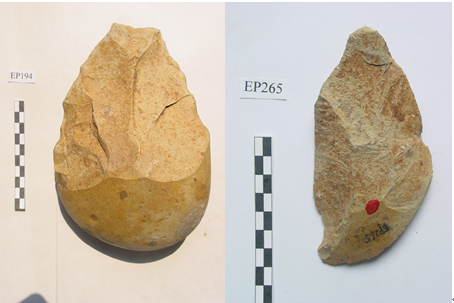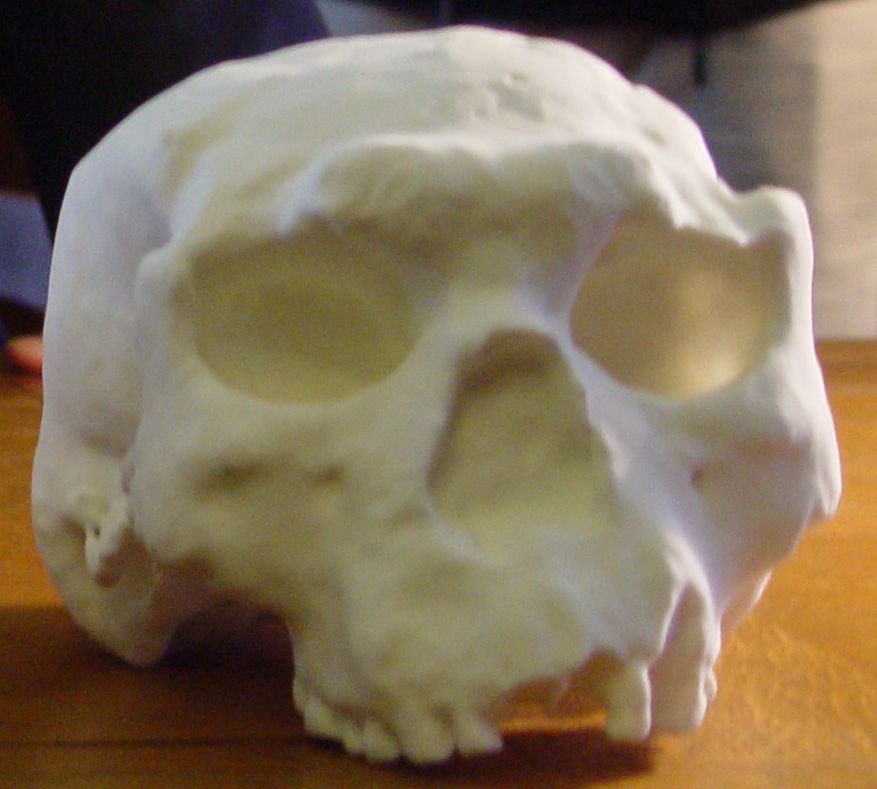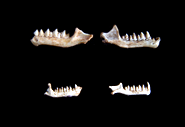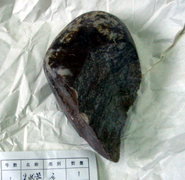



Yunxian Man was a species of early Paleolithic Homo erectus discovered in the middle reaches of the Yangtze. In 1975, at Longgu Cave in Meipu, Yun County, Hubei, four fossils of human teeth were discovered that are similar to the teeth of Peking Man. Also discovered were fossils of such animals as Gomphotheriidae and Hyaena licenti, which indicate a geological age earlier than the one in which Peking Man lived. In 1989 and 1990, two fossils of Homo erectus skulls were discovered at Xuetang Liangzi at the mouth of Quyuan River in Qingqu Town, Yun County; also discovered were fossils or such animals as Rhinopithecus lantianensis, Ailuropoda melanoleuca wulingshanensis, Hyaena licenti, Tapirus sinensis, Equus yunnanensis, Cervus elegans, Ruas yunnanensis, and eptobos brevicornis. The site dates back to the late period of Early Pleistocene, approximately one million years ago.
According to the study on the skulls, the facial features of Yunxian Man are the same as those of ancient human fossils discovered in China and other parts of Asia, except for the depression at the top of the nose, which is common to European ancient human species. Stone tools were made of pebbles along the Han River and mostly processed by striking. The culture of Yunxian Man was a type of Paleolithic pebble culture.
1. Yunxian Man Cranium I
Length: 26 cm, width: 19 cm, height: 12 cm
Yunman Man Cranium I was the first hominid skull fossil discovered in Hubei.
2.Yunxian chopping tool
Yunxian chopping tool is made of rectangular, flat pebble. It measures 28.5 cm long and 12 cm wide. It is characterized by single-side making of side edge and end edge. Similar chopping tools have not yet been discovered at any other Paleolithic site.

3.Conjoined specimens
At the site of Yunxian Man many stone tool specimens that can be conjoined were unearthed. That means the site was probably used to make stone tools, and it was the original living place of Yunxian Man.

4.Reconstruction model of Yunxian Man Cranium II
Chinese and French scientists used computer to make a 3-D reconstruction model of Cranium II. Its brain volume, which is 1,065 ml, indicates that Yunxian Man was a relatively primitive Homo erectus.

5. Hyaena licenti
Hyaena licenti, the fossil of which was unearthed at Yunxian Man Site, was typical of the North China fauna. It indicates that Yunxian Man existed in early Pleistocene, when Qinling Mountain Range was yet to rise.

6. Inferior maxilla fossils of Chiroptera in Yunxi
The oldest late Homo sapiens was discovered at Huanglong Cave in Yunxi in 2004. Among the fossils of coexisting animals unearthed, those of Chiroptera were discovered for the first time in China.

Upper left: Megaderm lyra
Upper right: Hipposideros armiger
Lower left: Scotomanes emarginatus
Lower right: Rhinolophus ferrumequinum
7. Late Paleolithic pointed tools
In 1992, a late Paleolithic site dating from some 50,000 years ago was discovered at Jigongshan, Jiangling. Typical remains of pebble industry were discovered in the bottom cultural layer. The excavation, which covered an area of nearly 500 square meters, revealed a range of human activities, in which there are platforms for making stone tools. Around the platforms are densely distributed waste fragments, crumbs and finished stone tools. There are such common types of stone tools as chopping tools, pointed tools and scrapers. Of them, the most characteristic are large pointed tools.
